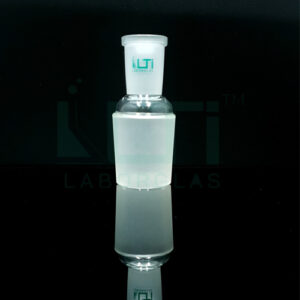Pipette Stand (Horizontal)
- This detachable stand can hold 12 pipettes, 6 on each side, in a horizontal position
- This autoclavable stand has two sides which are attached to each other with three metallic rods coated with Polypropylene
- This stand can be easily disassembled for space saving storage.
Material: Polypropylene
| PART No. | TYPE | Pack QTY. |
| 3540 | FOR 12 PIPETTE | 10 |
Here are some common uses and benefits of a horizontal pipette stand:
- Pipette Organization: One of the primary uses of a horizontal pipette stand is to provide a designated and organized storage space for pipettes. This helps prevent pipettes from being misplaced or damaged when not in use.
- Preventing Contamination: Storing pipettes horizontally in a stand helps prevent contamination of the pipette tips and internal components. The horizontal position reduces the likelihood of liquids entering the pipette barrel, minimizing the risk of cross-contamination between samples.
- Maintaining Pipette Integrity: Pipettes are precision instruments, and their accuracy can be compromised if they are not stored properly. A horizontal pipette stand ensures that the pipettes are kept in a stable position, preventing any warping or damage that might occur if they were stored vertically.
- Easy Access: Placing pipettes horizontally in a stand makes them easily accessible to users. This is particularly important in busy laboratory settings where quick and convenient access to pipettes is crucial for efficient workflow.
- Space Optimization: Horizontal pipette stands are designed to take up minimal bench space. They are compact and can hold multiple pipettes in a small footprint, contributing to an organized and efficient laboratory workspace.
- Drying Pipettes: After cleaning or autoclaving, pipettes can be placed horizontally in the stand to air-dry. This promotes thorough drying and helps prevent the retention of moisture, which could impact the accuracy of liquid dispensing.
- Compatibility with Multiple Pipette Types: Horizontal pipette stands are often adjustable and compatible with various types and sizes of pipettes. They can accommodate different models, including volumetric pipettes, serological pipettes, and micropipettes, making them versatile in laboratory settings.
- Laboratory Hygiene: Keeping pipettes horizontally in a stand helps maintain a clean and organized laboratory environment. It facilitates proper hygiene practices by preventing pipettes from coming into contact with laboratory surfaces and potential contaminants.
- Minimizing Tip Damage: Storing pipettes horizontally reduces the risk of damage to the tips. If pipettes are stored vertically without adequate support, the tips may become bent or damaged, affecting the precision of liquid dispensing.
- Visual Inspection: Pipettes stored horizontally are easily visible, allowing users to perform visual inspections. This is important for checking the cleanliness of the pipette and ensuring that there are no visible defects before use.





